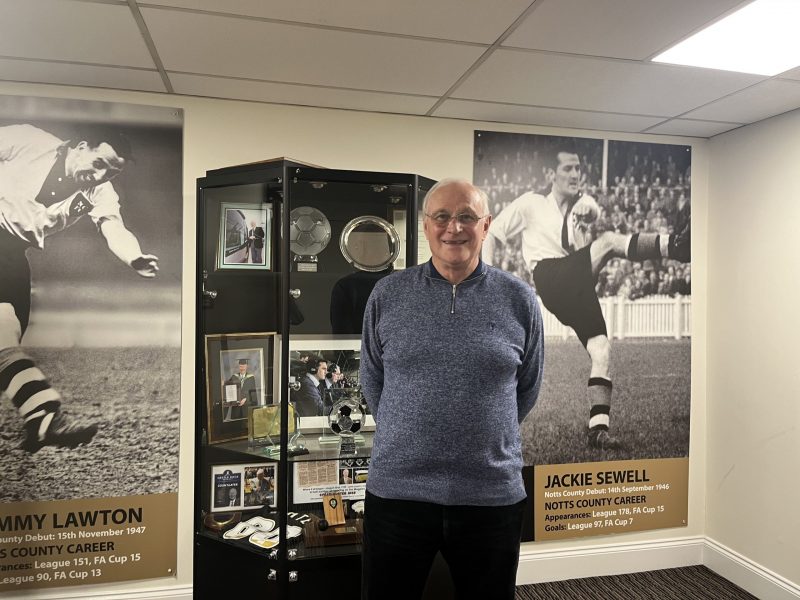Nottingham Biomedical Research Centre is involved in one of the nation’s largest FOCUS studies on sports-related injuries with support from Notts County legend, Les Bradd.
The FOCUS study is investigating 320 ex professional footballers and 360 non-footballers to research the cognitive and physical performance of former footballers.

Musculoskeletal Project Manager Dr Bonnie Millar wants to “keep the beautiful game and maintain the wellbeing of footballers.”
At this stage there are five cities across the country taking part in the study, in the hopes of publishing the report findings this year.
Dr Bonnie Millar took over the FOCUS study in 2020 and explained how the studies questionnaire was based on one previously developed and tested in clinical studies.
The questionnaire has since been adapted into a booklet comprising of 20 pages to gain data and neurocognitive information.
She added: “there are lots of ways to change things and make them better for players.”
Questions vary from what positions footballers played to how active they are now.
Based on the answers provided, analysis has been undertaken over several months assessing non-footballer’s findings in comparison to ex footballers.
Professor Weiya Zhang, Chief Executive Investigator for the FOCUS study, said: “FOCUS is the biggest of its kind involving living ex-professional footballers and general population comparison group in the UK.
“The research project is also investigating the implications of repeated heading of the ball, head injuries and concussion which may be related to the development of neurodegenerative diseases such as dementia.”
Currently, the neurocognitive study is at stage two, this involves measuring the frequency of headings and the implications of memory loss and dementia.
The study is also investigating the physical impact of football, determining whether ankle and foot injuries are resulting in osteoarthritis and chronic pain.
Musculoskeletal administrator, Sean McLoughlin, said: “The majority of people contacted are eager to be involved and have an informed interest in the research.
“I believe that the cooperation between work colleagues has been effective and has enabled us to collect a lot of valuable information.”

Les Bradd netted 137 goals across 11 years at Notts County and became the record-breaking goal scorer for the club.
The ‘Blond Bomber’ has been the beating heart of Notts County’s success from striker to ambassador, winning the Lifetime Achievement Award at the Nottingham Sports Awards in 2015.
Les has proudly supported the black and white stripes despite injuries, full knee replacement surgery and a heart attack spanning his career.
He said: “because of players prior to my days putting themselves forward we’re able to overcome these things, it is important that if I can help with any research that I get involved.”
When reflecting on his career, he says: “The personal record at the time wasn’t the be all end all.
“It was all about the team spirit, supporters and one club achieving something great.”
Les has supported medical research since retiring.
He has worked with the University of Nottingham and London looking into dementia, putting together questionnaires and engaging with the FOCUS study in the city where he made history.
The Professional Football Association recruited players nationally to fill out questionnaires and participate in the sports-related injury research.
Les engaged with the study by having X-rays at Nottingham City Hospital, meetings with musculoskeletal administrators and completing questionnaires.
“Injuries back in the day were mainly calf and thigh related rather than the ligament damage that takes place now” recalled Les.
There is debate over the severity of injuries in past decades in comparison to contemporary football.
Dr Millar discussed how in the past heavy leather balls were utilized causing greater impact.
But young footballers have argued the speed and velocity of the lighter balls nowadays are more harmful with football pitches are constructed with concrete increasing the rate of injury.
Similarly, the shift to lighter football boots has resulted in more ankle injuries.
Dr Millar said: “The focus study will make a difference when we can see the results, the Football Association will look at the findings and use them to influence guidelines.”
Future changes may include the equipment used, limiting header practise, the age headings are taught and substituting players’ who have hit their head to give them a break.
The Football Association and Professional Football Association will be prompted by the published findings to ensure the high-risk environment of professional football can be lessened, to protect their players outside of the pitch.
Nottingham’s Biomedical Research Centre are hoping to publish their findings in academic journals and on their website before the new year, encouraging greater regulation to protect the well-being of sportsmen.
Les concludes: “I don’t want football to change, to me it is an exciting game. Certainly, there’s risks attached to everything in our lives… my dream was to become a professional footballer and I wouldn’t have changed my life knowing all that I know now.”
Image Credits: Louise Walt and Rachel Webster


